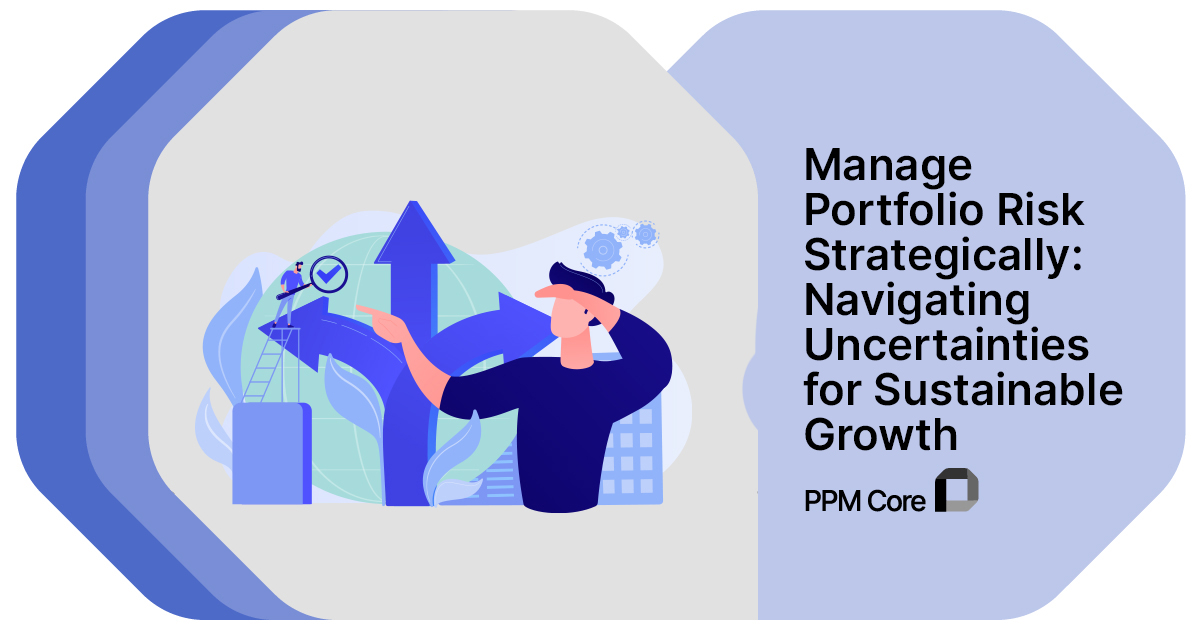In the fast-paced and dynamic business landscape, strategically managing portfolio risk has emerged as a critical component for organizations seeking sustainable growth and resilience. This article delves into the essence of portfolio risk management, offering a comprehensive guide that combines proven methodologies and contemporary strategies to navigate uncertainties and secure long-term success.
Defining Portfolio Risk Management:
We understand the value of words. Perhaps this is due to our time as an engineer or project manager. If you are conveying a specific idea and wish the person listening or reading to come away with an understanding, it will require clear articulation. This includes establishing a lexicon associated with the topic, without which words are subject to interpretation by those listening or reading.
What is a Portfolio in Business Terms?
A business portfolio refers to a collection of projects, investments, and products managed as a cohesive unit to achieve specific strategic objectives.
Portfolios provide organizations with a holistic view of their initiatives, allowing for effective resource allocation and risk management.
Components of Portfolio Risk Management:
1. Risk Identification:
- Start by systematically identifying potential risks across the entire portfolio.
- Consider financial risks, market risks, operational risks, and external factors that could impact the success of individual projects or products.
2. Risk Assessment:
- Evaluate the probability and potential impact of identified risks.
- Use quantitative and qualitative methods to assess risks, considering their interdependencies and cumulative effect on the portfolio.
3. Risk Mitigation Strategies:
- Develop comprehensive risk mitigation strategies for each identified risk.
- Prioritize risks based on their potential impact and likelihood, and allocate resources to address and minimize these risks.
4. Diversification and Resource Allocation:
- Implement a diversified portfolio strategy to spread risks across different projects or investments.
- Allocate resources strategically, balancing high-risk, high-reward initiatives with more stable and conservative projects.
5. Monitoring and Adaptation:
- Establish a robust monitoring system to track risks throughout the portfolio lifecycle.
- Regularly reassess risk profiles and adapt strategies as the business environment evolves or new information emerges.
Contemporary Approaches to Portfolio Risk Management:
1. Agile Portfolio Management:
- Embrace Agile principles for portfolio management to enhance adaptability and responsiveness.
- Iteratively reassess risks, reprioritize initiatives, and adjust portfolios based on changing market conditions or internal dynamics.

Do you find this article interesting?
Subscribe to our Newsletter for updates on the latest blog articles.
2. Technology Radar:
- Implement a technology radar to monitor emerging technologies and assess their potential impact on the portfolio.
- Stay ahead of industry trends, leveraging innovative solutions to mitigate risks associated with technological obsolescence.
3. Environmental, Social, and Governance (ESG) Considerations:
- Integrate ESG factors into risk assessments to address sustainability and ethical concerns.
- Mitigate risks associated with changing regulatory landscapes and consumer preferences by aligning portfolios with responsible business practices.
4. Scenario Planning and Contingency Reserves:
- Engage in scenario planning to anticipate potential disruptions and uncertainties.
- Establish contingency reserves to address unforeseen events, ensuring that portfolios remain resilient in the face of unexpected challenges.
Conclusion:
In an era of constant change and evolving business landscapes, strategic portfolio risk management is the compass that guides organizations toward sustainable growth. By embracing a comprehensive approach that includes traditional risk management practices and contemporary strategies like Agile portfolio management and ESG considerations, businesses can navigate uncertainties with confidence. Strategic risk management not only protects investments but also positions organizations to capitalize on opportunities and achieve long-term success in an ever-changing marketplace.
Optimize your portfolio’s path to success with PPM Core, the cloud software solution for strategic portfolio risk management. PPM Core streamlines complexities for effective risk management. Trust in PPM Core to navigate uncertainties and facilitate sustainable growth in the business landscape.
About the Author
Jon M. Quigley PMP CTFL is a principal and founding member of Value Transformation, a product development training (from idea to product retirement) and cost improvement organization established in 2009.

